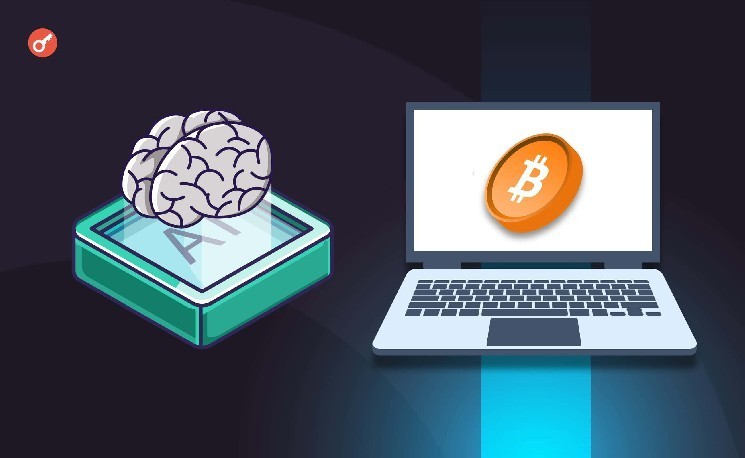The controversy round AI has shifted from questioning its relevance to specializing in making AI extra dependable and environment friendly as its use turns into extra widespread. Michael Heinrich envisions a future the place AI facilitates a post-scarcity society, liberating people from mundane duties and enabling extra inventive pursuits.
The information dilemma: high quality, provenance, and belief
The dialog round synthetic intelligence (AI) has basically modified. The query is now not its relevance, however the right way to make it extra dependable, clear and environment friendly as its deployment in all sectors turns into commonplace.
The present AI paradigm is dominated by centralized “black field” fashions and huge proprietary information facilities, and faces growing stress from issues about bias and unique management. For a lot of firms within the Web3 area, the answer lies not in growing regulation of present techniques, however in totally decentralizing the underlying infrastructure.
For instance, the effectiveness of those highly effective AI fashions is at the start decided by the standard and integrity of the information used to coach them. This component should be verifiable and traceable to stop systematic errors and AI illusions. Because the stakes of industries corresponding to finance and healthcare develop, the necessity for a trustless and clear basis for AI turns into vital.
Serial entrepreneur and Stanford graduate Michael Heinrich is among the folks main the way in which in constructing that basis. As CEO of 0G Labs, he’s at the moment creating what he calls the primary and largest AI chain, with a said mission to make sure that AI turns into a safe and verifiable public good. Heinrich, who beforehand based Garten, a number one YCombinator-backed firm, and labored at Microsoft, Bain, and Bridgewater Associates, is now making use of his experience to the architectural challenges of decentralized AI (DeAI).
Heinrich emphasizes that the core of AI’s efficiency lies in its information base, or information. “The effectiveness of an AI mannequin is at the start decided by the underlying information used to coach it,” he explains. A high-quality, balanced dataset results in correct responses, whereas unhealthy or underestimated information leads to poor high quality output and is vulnerable to hallucinations.
For Heinrich, sustaining the integrity of those consistently up to date and various datasets requires a radical departure from the established order. He argues that the primary reason for AI illusions is a scarcity of transparency in provenance. His treatment is a code.
I consider that each one information needs to be secured on-chain with cryptographic proofs and verifiable proof trails to take care of information integrity.
This decentralized and clear basis, mixed with financial incentives and steady fine-tuning, is seen as a vital mechanism to systematically eradicate errors and algorithmic bias.
Past technical fixes, Heinrich, a Forbes 40 Beneath 40 honoree, has a macro imaginative and prescient for AI, believing it ought to usher in an period of abundance.
“In a perfect world, we’d hope that the circumstances can be in place for a post-scarcity society, the place assets can be plentiful and nobody must fear about doing a mediocre job,” he says. This variation will enable people to “concentrate on extra inventive and leisurely work,” basically giving everybody extra free time and monetary safety.
Importantly, he argues {that a} decentralized world is effectively suited to energy this future. The benefit of those techniques is that the incentives are aligned, making a self-balancing economic system of computing energy. Because the demand for a useful resource will increase, the inducement to provide the useful resource till that demand is met naturally will increase, satisfying the demand for computational assets in a balanced and permissionless method.
Defending AI: Open supply and designing incentives
To guard AI from intentional abuses corresponding to voice cloning fraud and deepfakes, Heinrich suggests combining human-centric and architectural options. First, we have to concentrate on educating folks on the right way to determine AI fraud and fakes used for id theft and disinformation. Heinrich mentioned: “We want to have the ability to determine and fingerprint AI-generated content material so folks can shield themselves.”
Lawmakers may play a job by establishing world requirements for AI security and ethics. Though that is unlikely to eradicate the misuse of AI, the existence of such requirements “may go some option to deterring the misuse of AI.” However essentially the most highly effective countermeasures are baked into decentralized design: “Designing techniques aligned with incentives can dramatically cut back the intentional abuse of AI.” By deploying and managing AI fashions on-chain, trustworthy participation is rewarded, however malicious conduct has direct financial penalties by way of on-chain thrashing mechanisms.
Though some critics are involved in regards to the dangers of open algorithms, Heinrich informed Bitcoin.com Information that he’s an enthusiastic supporter of open algorithms as a result of they permit visibility into how fashions work. “With issues like verifiable coaching data and immutable information trails, you’ll be able to guarantee transparency and allow neighborhood oversight.” This straight counters the dangers related to proprietary, closed-source, “black field” fashions.
To appreciate its imaginative and prescient of a safe, low-cost AI future, 0G Labs is constructing the primary Decentralized AI Working System (DeAIOS).
This working system is designed to offer a extremely scalable information storage and availability layer that allows verifiable AI provenance, or on-chain storage of huge AI datasets, making all information verifiable and traceable. This degree of safety and traceability is important for AI brokers working in regulated areas.
Moreover, the system includes a permissionless computing market, democratizing entry to computing assets at aggressive costs. This can be a direct reply to the excessive prices and vendor lock-in related to centralized cloud infrastructure.
0G Labs has already demonstrated a technological breakthrough with Dilocox, a framework that allows the coaching of LLMs with over 100 billion parameters on distributed 1 Gbps clusters. Dilocox has demonstrated that splitting fashions into smaller, independently educated components will increase effectivity by an element of 357 in comparison with conventional distributed coaching strategies, making large-scale AI improvement economically viable outdoors the partitions of centralized information facilities.
A brighter, extra inexpensive future for AI
Finally, Heinrich believes decentralized AI has a really vivid future, outlined by breaking down boundaries to participation and adoption.
“This can be a place the place folks and communities create knowledgeable AI fashions collectively, making certain that the way forward for AI is formed by many organizations, not just a few centralized ones,” he concludes. As proprietary AI firms face growing worth stress, the economics and incentive construction of DeAI supplies a lovely and rather more inexpensive various to creating highly effective AI fashions at low value, paving the way in which for a extra open, safe, and finally extra worthwhile technological future.
FAQ
- What are the core points with present centralized AI? Present AI fashions undergo from transparency points, information bias, and proprietary management on account of centralized “black field” architectures.
- What answer is Michael Heinrich’s 0G Labs constructing? 0G Labs is creating the primary Decentralized AI Working System (DeAIOS) to make AI a safe and verifiable public good.
- How does decentralized AI guarantee information integrity? Information integrity is maintained by securing all information on-chain with cryptographic proofs and verifiable proof trails to stop errors and illusions.
- What are the primary advantages of 0G Labs’ Dilocox expertise? Dilocox is a framework that considerably streamlines large-scale AI improvement, exhibiting a 357x enchancment in comparison with conventional distributed coaching.










